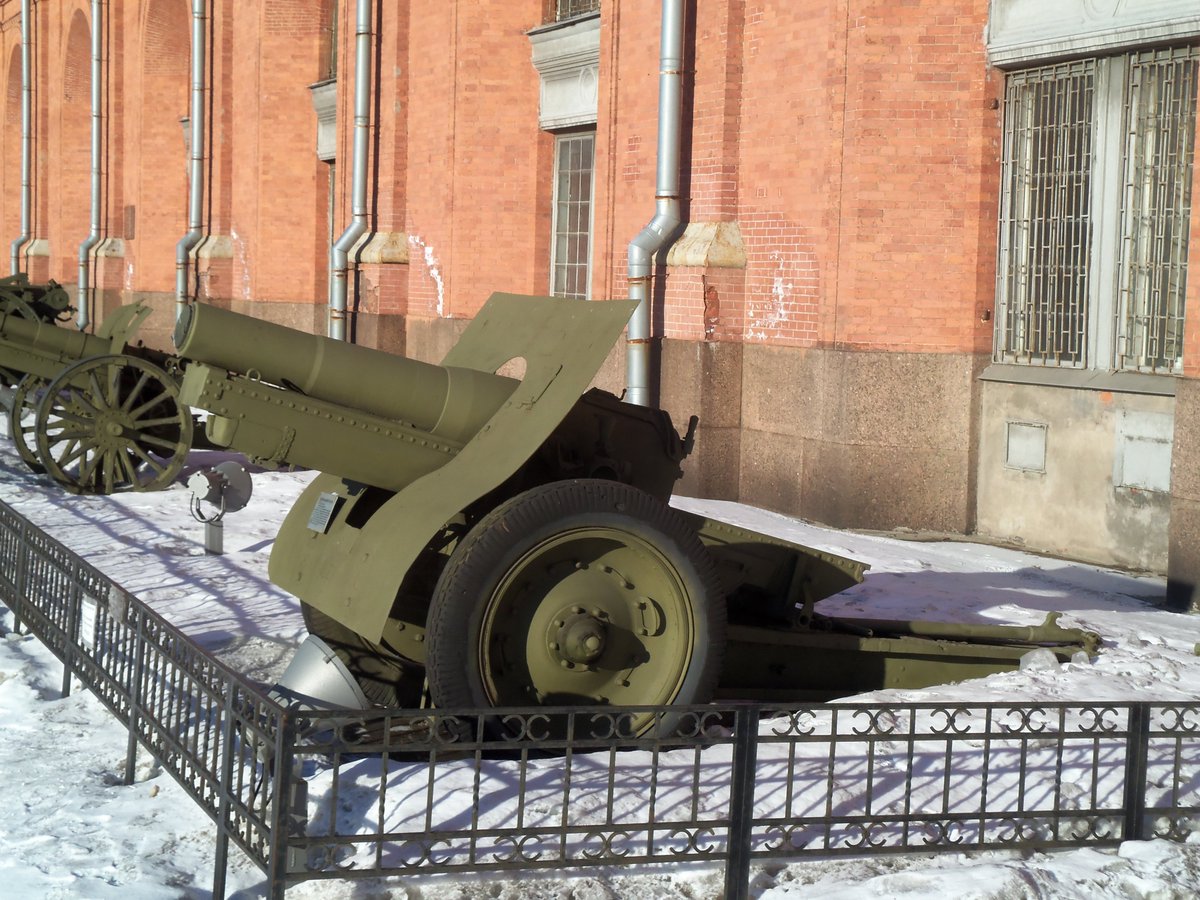(2/23) To understand what the Tyulpan is and why it exists, according to Shirokorad, we must go back to April 1940. The Stavka was reflecting on the lessons given by the Finns that the Soviets had paid dearly for during the Winter War. Stalin, of course, was present.




(3/23) It's important to note that in Russian/Soviet terminology there is a distinction between 'mortars' (мортира) and 'mortars' (миномёт). The former refers to short-barrelled high-angle artillery that does not use a base plate to absorb recoil.




(4/23) The latter use a base plate and generally lack recoil devices. These weapons fire 'artillery mines' (артиллерийская мина), hence 'миномёт' (lit. 'mine-launcher'), which is itself a direct translation of the German 'Minenwerfer'. The classic example is the Stokes mortar.




(5/23) Anyway, at this time the Soviets had enthusiastically embraced the 'mine-thrower' as 'pocket artillery' for the infantry. They ranged from the small company-level 50-mm RM-38 to the regimental-level 120-mm PM-38. But Stalin wanted heavier mortars.




(6/23) Work began on several 160-mm and 240-mm projects, but it would not be until 1944 when the first heavy mortar, the 160-mm obr. 1943 (MT-13), entered service. Probably because there were more pressing matters going on between 1940 and 1944.




(7/23) The first 240-mm mortar, the M-240, did not enter service until 1950. This mortar was intended for the 'special power' (особой мощности) artillery units of the Supreme High Command Artillery Reserve (ARVGK). 

(8/23) The M-240 is a massive weapon: at its maximum elevation (80°) it towers over the average soldier, at 5.34 m in height. With a combat weight of over 4 t, it must be towed.


https://twitter.com/UAWeapons/status/1621477323039014912


(9/23) It can throw the standard 130 kg 53-F-864 HE bomb out to 9.7 km. The bomb has a massive ~32 kg of explosive filler. To put this into perspective, the 203-mm 3OF43 Albatros fired by the 2S7 Pion has about 50% of the filler (~18 kg). 

(10/23) For obvious reasons, no one is going to be drop-firing a 130 kg mortar bomb down a ~6 m long tube like a normal mortar, so the M-240 is a breech-loading mortar. The rate-of-fire is 1 round/min.




(11/23) Of course, having such a large and heavy weapon handled manually results in a rather long setup (20-25 min) and teardown (15-20 min) time. This is not ideal for such a short-ranged weapon. 

(12/23) The answer was to put it on an SP platform, thus project Tyulpan ('Tulip') was formally authorised in 1967. The chassis (GBTU index 305), and was developed in common with the Akatsiya and Giatsint-S by Uraltransmash based on the Krug SAM TEL.


https://twitter.com/ChungTzuW/status/1699686166813966533


(13/23) Entering service in 1971 as the 2S4, Tyulpan features comprehensive mechanisation of the mortar's handling and loading process, significantly speeding up the deployment/undeployment time to a matter of minutes.
(14/23) The 2B8 mortar is ballistically identical to the M-240 and both can fire the same projectiles. The only real difference is the extensive hydraulic machinery of the 2B8, which cannot be fired separately from the Tyulpan chassis.






(15/23) The Tyulpan has an internal circular magazine capable of holding up to 20 mortar bombs or up to 10 rocket-assisted bombs (~18 km range), which are much longer and weigh nearly twice as much as the regular bombs.




(16/23) The loading process from the internal magazine is mostly automated, except that the operator must set the charges and fuse. The nominal loading time in the manual is 62 s.
(17/23) A winch is also provided for hoisting up bombs from the ground if the Tyulpan is using an external ammunition supply. 

(18/23) In addition to the regular unguided mortar bombs, Tyulpan is capable of firing the laser-guided Smelchak ('Daredevil') projectile.








(19/23) Relatively few Tyulpans were made. According to Shirokorad, a single Tyulpan (₽210,000) cost nearly 7 times as much as an Akatsiya (₽30,500) in 1972-73, and he claims that no more than 588 were built. 

(20/23) Russia is the only significant user of the Tyulpan, having inherited almost all the Soviet stocks. It has seen combat in Chechnya, and is being used in Ukraine during the ongoing war.




(21/23) While Ukraine is not known to use the Tyulpan or captured any, they are known to use at least 1 M-240, whose origin is unclear because the mortar has been long out of service. There are rumours it came from a museum, but I don't know.
mil.in.ua/uk/news/vijsko…

mil.in.ua/uk/news/vijsko…

(22/23) The short range and relatively cumbersome nature of the Tyulpan heavily restrict its flexibility. In a permissive environment like the Afghan or Chechen wars, this is less of an issue, but against a more well-equipped opponent, it can be fatal.
https://twitter.com/UAWeapons/status/1682024520683778048
(23/23) However, it is also a devastating weapon, especially against fortifications and in urban combat, where the high angle trajectory and powerful HE bombs are most valuable. If it can be protected and brought within range. 

(24/23) Voennoe Delo on the Tyulpan
The Zs should be 3s. Don't blame me for the Russian using the same letter for Z as the number 3.
(25/23)
Actually, reading this again, I'm not sure if 210,000 is the unit price or for all 4 per year. Either way, it's still more than the Akatsiya.

Actually, reading this again, I'm not sure if 210,000 is the unit price or for all 4 per year. Either way, it's still more than the Akatsiya.
https://twitter.com/ChungTzuW/status/1725026846125752333

• • •
Missing some Tweet in this thread? You can try to
force a refresh

 Read on Twitter
Read on Twitter































